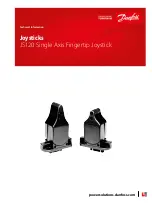
6
Installing • Commissioning
Module pin assignment
(see Figure 1)
The PROFIBUS-DP module has a 7-pin connector plug for
connection to the bus system (wire-bound transmission):-
Pin Signal description
Z1
RxD/TxD-P (wire 1)
Z2
RxD/TxD-P (wire 1)
Z3
RxD/TxD-N (wire 2)
Z4
RxD/TxD-N (wire 2)
Z5
DGND
Z6
VP
Z7
RTS (via 390
Ω
)
Pins Z1 and Z2 are connected to each other on the module, as
well as pins Z3 and Z4. The RTS signal present on pin Z7 is a
TTL signal.
Wiring
(see Figures 1 to 5)
The entire wiring of a PROFIBUS-DP system is based on the RS-
485 transmission technique with a shielded twisted pair cable.-
Therefore, all regulations stated in DIN 19 245 Part 3 Section 3
are applicable. -
DIN 19 245 recommends to use cable type A in a line structure.All
transmission rates and cable lengths specified in this standard
usually refer to cable type A.-
Wiring the bus stations
A maximum of 32 bus stations (at least one master and up to 31
slaves) can be combined in one bus segment. -
The possible cable lengths specified for PROFIBUS-DP depend
upon the transmission rate and apply to bus links of cable type A
in a bus segment, provided that these are equipped with a proper
bus termination (see description below).-
Maximum bus segment length (for wire-bound transmission)
without repeater.- When using FO cables for connection, the
manufacturer specifications are valid, which usually allow to cover
longer distances: -
Cable length
Max. transmission rate Comment
1200 m
≤
93.75 kBaud
1000 m187.5 kBaud
400 m
500 kBaud
200 m
1.5 MBaud
100 m
3...12
MBaud
not supported by the
controllers-
The bus stations must be wired in such a way that any of them
can be removed from the bus without impairing the data traffic on
the bus or even interrupting it.Do not apply the bus wires directly
to pins Z1 and Z3 and then establish a connection to the next
station using pins Z2 and Z4. Instead, feed the signals to the
devices via stub lines. Stub lines to the individual stations should
have a max. length of 6.6 m (with cable type A).-
Wiring the termination resistors / bus termination adapter
The module is not equipped with a bus termination. However,
such a termination may be necessary to avoid mismatch between
the cable termination and the characteristic impedance. In this
case, a separate bus termination must be provided at the bus
segment ends (master and last slave in the line structure, see
Figures 2 and 4). --
It is also possible to terminate the bus with the optional bus
termination adapter (see Figure 3). --
When using controllers as bus stations, the termination resistors
must be connected via the separate bus termination adapter.- The
adapter must be connected into the line between the device and
the bus cables.- On the adapter's 7-pin screw terminal block the
signals of pins Z1 (RxD / TxD-P), Z3 (RxD / TxD-N) ), Z5 (DGND)
and Z7 (RTS) are available, like on the module.The signals of pins
Z2 (RxD / TxD-P), Z4 (RxD / TxD-N) and Z6 (VP) are not
available, since the device with the bus terminators is equivalent
with the last device in a bus segment and, therefore, does not
need these signals.-
On the master station side, the termination resistors are usually
integrated in the respective adapters. Please refer to the
respective manuals for information on how to activate these
resistors.-
What is stated above about error-free operation is also valid for
the bus termination.- As a rule, the network should always be
opened behind the bus termination adapter, i.e. directly at the
PROFIBUS-DP module. -When the device is not powered for any
reason, it can no longer be ensured that the DGND and VP
signals are fed into the bus termination resistors or that the
connection between the bus termination resistors and these
signals is maintained. As a result, the communication may be
affected in this case. - --Error-free data transfer cannot be
ensured, then.-
Cable shield
The cable shield of the bus cables must be connected to the
controller housing via the contact panel and the shield clamps
delivered with the module.- -Otherwise, the specified EMI/RFI
shielding and RFI suppression capabilities of the - PROFIBUS-DP
interface cannot be ensured.-
For details about how to connect the cable shield using the
contact panel and shield clamps please refer to the respective
installation instructions of the individual controllers. --







































